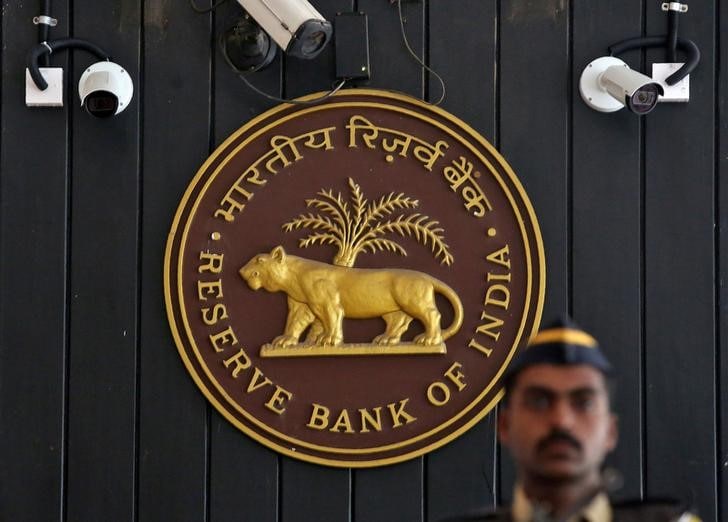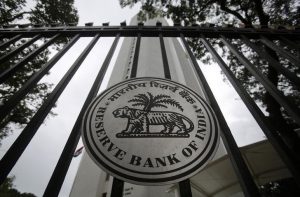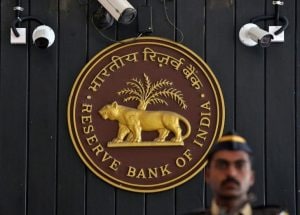In June, 2017, the Reserve Bank of India (RBI) sent the first 12 marquee cases to the National Company Law Tribunal (NCLT) or the bankruptcy court.
In April 2018, 270 days, which is the deadline set for these cases under the Insolvency and Bankruptcy Code (IBC), comes to an end.
CNBC-TV18’s Latha Venkatesh caught up with MS Sahoo, chairperson of Insolvency & Bankruptcy Board, to check out how the IBC process has worked and whether the country and the banking system has been able to get back at least some of the money that it lost to large defaulting cases.
In April end, 270 days, which is the deadline set for the cases under the Insolvency and Bankruptcy Code (IBC) are coming to an end. What are your first thoughts, would you say that these 12 cases are largely a symbol of the success of the NCLT process?
In fact we have about 700 cases under the resolution process, 12 is a sub-set of them. Of the 700, we have at least 100 which have crossed the first stage, that means either they have gone into successful resolution, or have been approved for liquidation.
Not that every case requires 170 days. We have corporates of different sizes with different complications, somewhere it could be completed much before 180 days and that is why we have also a fast-track mechanism for certain categories. So realising that there can be complications in some cases, at least in initial days, the law provides an additional 90 days.
As you said, for these 12 cases, these are very big cases, it took longer time. We have given additional 90 days and all of them are approaching the deadline. However, at least for one, the resolution plan has been approved. The rest, I think except for one or so, have matured and are about to be approved by the Committee of Creditors (CoC) or are under the consideration of NCLT. Timeline is extremely important when you do a process like this because you cannot keep the process on for a long time when the organisational value declines making the resolution difficult.
We have seen two cases where some time was consumed in the NCLT process where it has allowed additional time of 30 days or 50 days. So I am reasonably hopeful. Initially, there were quite a few issues raised before NCLT about the admission process, and all of them got sorted out in course of time and some required intervention of higher courts.
Now we are passing through the next critical stage, approval stage. This will also pass through. Naturally a new law has come in, people will have different perspectives, and it is good that these are getting sorted out and streamlining the process for future.
A large part of the litigation in this 12 marquee cases has come because of this Section 29A and people who are involved in the process tell me that persons acting jointly or in concert, that phrase is the big problem. Do you see that getting changed sometime soon?
There has been some recommendation from insolvency law committee on this. However, I would not be able to tell what view government would ultimately take. However, surely, they were certain unintended exclusions, which will be addressed. For example, an absolutely clean person, a resolution applicant comes in to rescue a company in distress, and in the process becomes the promoter or manager of that company.
The stigma that company was earlier having, NPA or wilful defaulter, or it had some fraudulent transaction, that should not stick to the new clean person and that clean person should not be debarred from submitting resolution plans in future.
Similarly, there are pure play financial entities which had given loan some time back, in course of time under various schemes those loans were converted to equity, now they have become promoter or controller, but they are not really in the business of running that enterprise, they are in the business of giving credit. So the stigma attached to an enterprise which has an NPA, should not attach to this person. So these kind of improvements definitely I can foresee.
You expect that this advice given by the ILC will be accepted by the government?
I cannot say for the government, but these are the things, which are very obvious. These were not really intended to, for example, there is another kind of disability, which debars a person who has committed an offence punishable with two years or more. Such offence could be also a negligent road accident and that may not have anything to do with the running of a business. Then the consideration came up to debar those people who have really impaired their ability to run a business, for example by violating the economic and commercial laws, Sebi Act, Companies Act, prevention of money laundering Act, or foreign exchange smuggling Act, RBI Act, and in those cases, we will have enactments, if somebody has violated those acts and has been punished for two years, he should not be allowed.
Of course, there will be certain serious cases like moral turpitude or murder which gives a punishment of not less than seven years, those people will be debarred. However, after they have served the punishment, six years have passed, they may also be allowed to participate or submit a resolution plan.
You are obviously referring to a case where people are trying to rake up in the case of one of the buyers that he is involved in a litigation in another country on a sexual harassment case, even that does not destroy the person’s ability to turnaround the company. It is not an economic offence in a strict sense of the term. Do you see the amendment to Section 29A removing these kinds of disabilities?
No, that is the specific recommendation of the ILC, two years or seven years punishment, and thereafter if six years have passed from release from the imprisonment, that should be good enough.
You are speaking a lot about the ILC recommendations which are taking care of some of these problems, any idea from the government when we can hear about a final decision on these recommendations?
I think you should ask this question to an astrologer. I would not be able to give any idea on this.
Is it expected even shortly because we were actually expecting it last Saturday itself, even this week we were expecting it. Is it something that is just a matter of few days?
I can only say that government is very sincerely committed to see through these reforms and you have seen in the past, the kind of measures so quickly they have done. In the Finance Act 2018, they amended the Income Tax Act to exempt the minimum alternate tax (MAT) arising from waiver of loans or write off of loans and to that extent they allowed adjustment of unabsorbed depreciation and carry forward losses.
You also saw the change in the Companies Act in January 2018, which earlier prohibited allotment of shares at a discount, but it is allowed now and shares can be allotted at a discount if such allotment is happening in pursuance to a resolution plan under the code. So I can say that government is committed to make things happen, they came out with an ordinance very quickly and it was regularised. In IBBI also as and when we see some difficulty, we try to respond as quickly as possible. However, it is difficult to give a timeframe.
You spoke about how the insolvency law committee has made some recommendations to tightening the definitions in Section 29A so that more people can apply for resolving the defaulting cases. One of the problems encountered is that most of the NCLT, the tribunals are ordering a forensic audit, now the forensic audit results come only later, but the parties are now blaming the resolution professional (RP) saying that you suppress facts. You know the two or three cases I am referring to, do you think this can be resolved in some fashion?
It is not possible for an RP to complete the entire process within six months. In the sense, he has to come across any kind of aberration, make an application to NCLT and it disposes well within time, even before the approval of the resolution plan so that resolution plan can factor in the outcome of adjudicating authority. So that does not happen and that is not expected, but it is good enough that he brings up if he has come across any preferential or irregular transaction along with resolution plan for consideration of the CoC. He should ideally at least make the application to adjudicating authority before he vacates the position. It is not expected he would complete in any case.
The responsibilities are of the erstwhile directors. For example, there is a Section 66, which talks about the fraudulent transactions and that has very specific provision which talks about the twilight zone.
In usual course the board of directors is in a fiduciary position, they are supposed to exercise due diligence and accountable to all stakeholders. After the company gets into resolution process, board of directors are completely suspended, somebody else, a third party professional takes it over. However, there is a period between these two times, when board is in full power and when board is absolutely out of the power. In between the time is called twilight zone when a director knows or ought to have known, the language used is that ought to have known that there is no reasonable prospects of avoiding the company getting into resolution process. If that is the situation, then he has an extra duty towards the creditors, he has to reduce the potential loss to the creditors. If he has not done it, the liability sticks to him whenever the matter is disposed off and the matter goes to NCLT.
NCLT takes a view, then somebody may go an appeal to NCLAT, so the process can continue. I think that is also the practice elsewhere and that is why sometimes the insolvency professionals (IPs), in some overseas markets, they charge an extra fee to handle these applications pending before adjudicating authorities after they have demitted the position.
What about the suppression of facts, when the forensic audit comes later on, how will the RP be in a position to tell the bidders that these are the problems, the forensic audit comes later. Forensic audit cannot be done in record time, it takes about five months or so, and then to accuse the RP that you did not disclose does not make sense.
If he has come across something irregular, it is the duty to pursue the matter. It is not that all corporate resolutions will require forensic audit. So the person who runs it for six months, he smells what is wrong, where it is wrong, and he should act diligently.
You do not think any different rules need to be written to kind of protect the RP from such accusations?
Not really.
I wanted to get to related party. That word also seems to be defined so widely, is there any way that can be restrained like it is under the Companies Act so that more people can apply for buying up companies. Brother-in-law and things like that, if that is included, then more and more people will get excluded from buying defaulting companies?
Related party is defined in the code in relation to a corporate debtor and the committee has suggested in fact defining also keeping in view an individual. What is the thinking as of now is that, these financial entities as I gave you the example, somebody has converted loan to equity and has become an interested party and therefore, he is not allowed to sit in the committee of creditors. One can consider that kind of thing to be exempt, that it would not apply to him. Similarly, all pure play financial entities – it could be ARCs, alternate investment funds, or banks, they would not be covered under this related party. However, beyond that, I do not think it is advisable really to exempt really related people from the provisions of 29A.
You have to admit that in India, a lot of the business families do intermarry. So there can be some relation somewhere, but that does not mean they are not distinct entities. Is there any way you can solve this problem? There will be instances where there is a back-door entry of the same defaulter, there will be instances where there are genuinely disinterested parties or distinct parties. How do you solve this problem of related parties in an Indian context?
When you take a policy decision, you choose between two alternatives. You are trying to address one problem, but while addressing the problem, there can be a side effect. You have to also see how serious is the side effect, is it good enough that it is avoiding the main objectives. Second, the principle of law is that what you cannot do directly, you cannot do that indirectly, and if you remove the restrictions on related party, it may not be really possible to avoid the things which we want to avoid.
So you do not want to redefine related party, you think it is fine as it is?
I think it is reasonable.
Let me finally come to IPs itself. What has been your learning from the way individual IPs and insolvency professional entities have worked? Would you like to encourage entities over individuals and how would you like to go about even regulating entities?
When we start something new, we have to be realistic, start on whatever is available on the ground. Fortunately we had three or four matured professionals who had been dealing directly or indirectly with corporate affairs and we started a system of a little examination, little handholding and some training programmes, and with that we started. Everywhere in the world, only an individual is registered as an insolvency professional. In India, every other professional, say advocate, or doctor, or chartered accountant, everybody is registered in individual capacity as a registered professional.
However, at times, there are arrangements to facilitate or empower the insolvency professional, there are various facilitations under our law. Our law says that you really do not throw out the corporate debtors’ management. All key managerial personnel, everybody as they are, except the board is out, everybody reports to him. He does not have to really replace entire set of people, bring another set of people. Facilitations are there in sense these people are legally obliged to extend all possible cooperation to him. He is also empowered to engage any professional he thinks necessary. He thinks he needs service of a chartered accountant, or an advocate, he is empowered to do that. Over and above that, there is a facility of insolvency professional entity.
The framework has been recently refined to say that, that entity can provide only support services, not the main service, the support services to an insolvency professional who is a partner or a director, and that will develop building some capacity in the system.
You have preferred that these insolvency professional entities should not do any other work. Would it not be better to say that these insolvency professionals should be involved – they may be doing other restructuring work which may not be through the NCLT, is it fair to say that they should not do any work except NCLT? Should that be defined a little more broadly?
There have been suggestions to that effect and those will be considered.
The Reserve Bank of India (RBI) circular on February 12 has directed banks that all stressed loans over Rs 2,000 crore, if not resolved in six months, should be brought to the NCLT. The clock started ticking on March 1 and on September 1 a bunch of cases will come. Now the previous 30 cases, only three have been registered, do you think the NCLT system will be able to take this load?
These are only addition by number of 10, 20, 30, 50. As I told, 700 have been admitted. Three times of that have been dismissed by rescind orders. For NCLT, whether it is a default of Rs 10,000 crore or Rs 1 lakh, the effort at the part of NCLT is almost same. Particularly as I told you, at the initial admission stage, things are very fairly streamlined because matters are sorted out, what is the dispute, whether dispute pre-existed, who is financial cater, who is an personal cater, whether he has given a notice, all those have been sorted out now. So that is why admission process is fairly simpler now.
The first 12 cases are still getting resolved, one hopes that by May all of them will get resolved. The next batch of 28 which were brought in in December, only three of the 28 have been admitted. Even that backlog is not over and then on September 1 we are going to get probably a bunch of cases which are over Rs 2,000 crore, that may be many more than 30. Do you think the system can take that?
Absolutely. I am saying see the track record. This is just another 30 number, another 100 number. If the NCLT has disposed about 2,000 matters in last one year, I do not see that they would not be able to handle if there is – and I am sure definitely many more cases as we think that all the cases having outstanding will move here, many will be sorted out before that time. All will not reach NCLT.









 Listen to the Article
Listen to the Article 
 Daily Newsletter
Daily Newsletter















